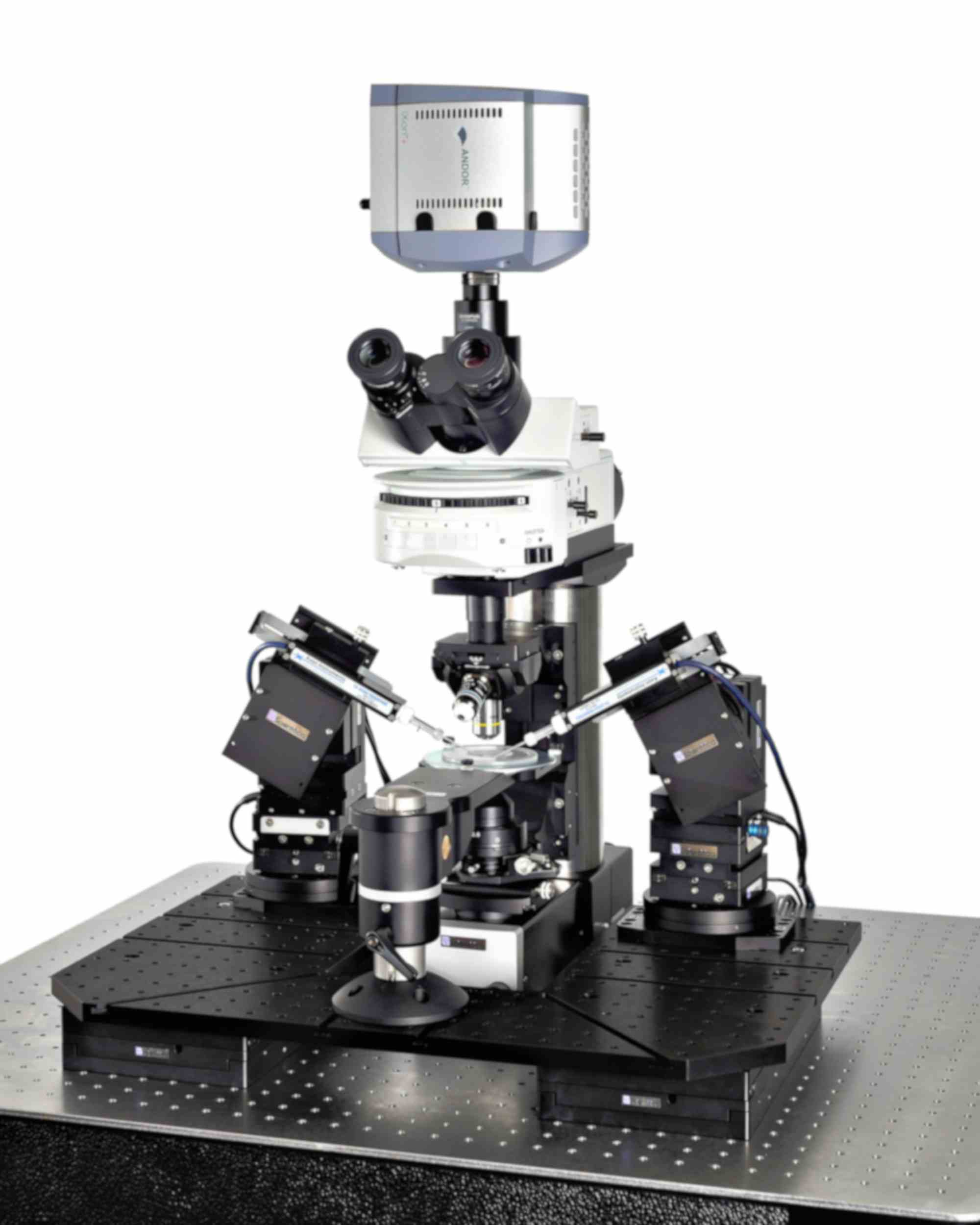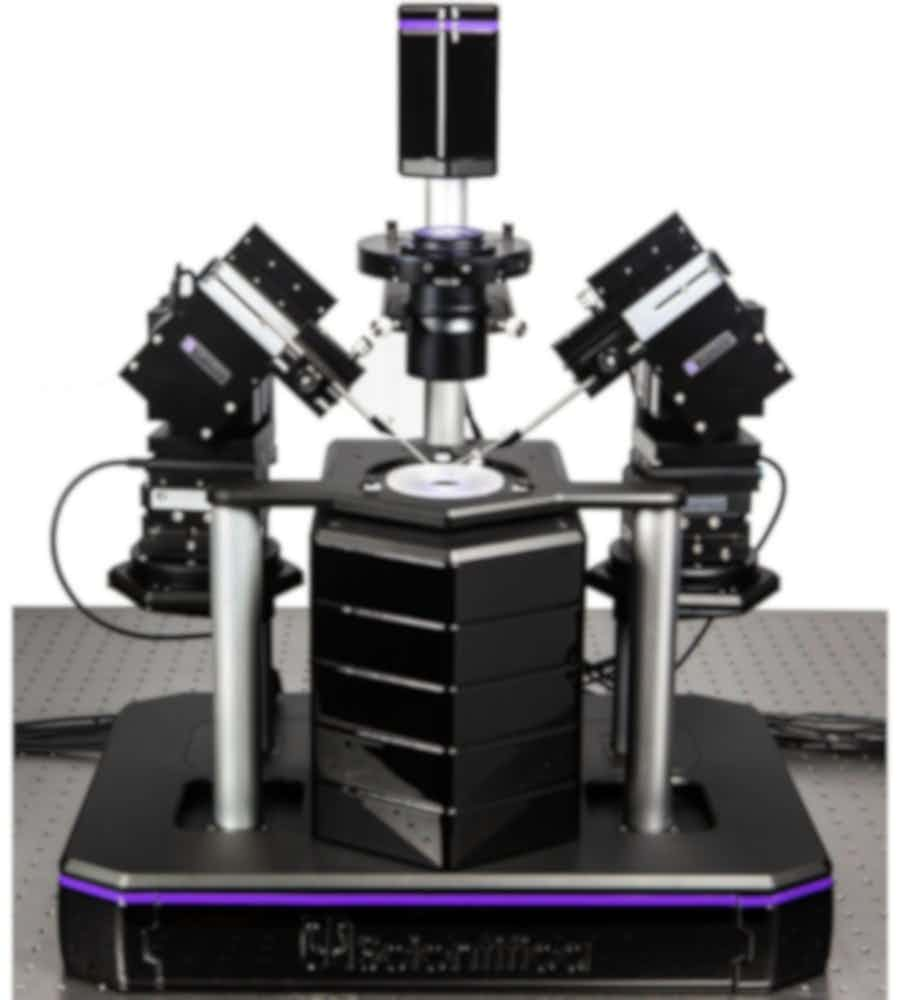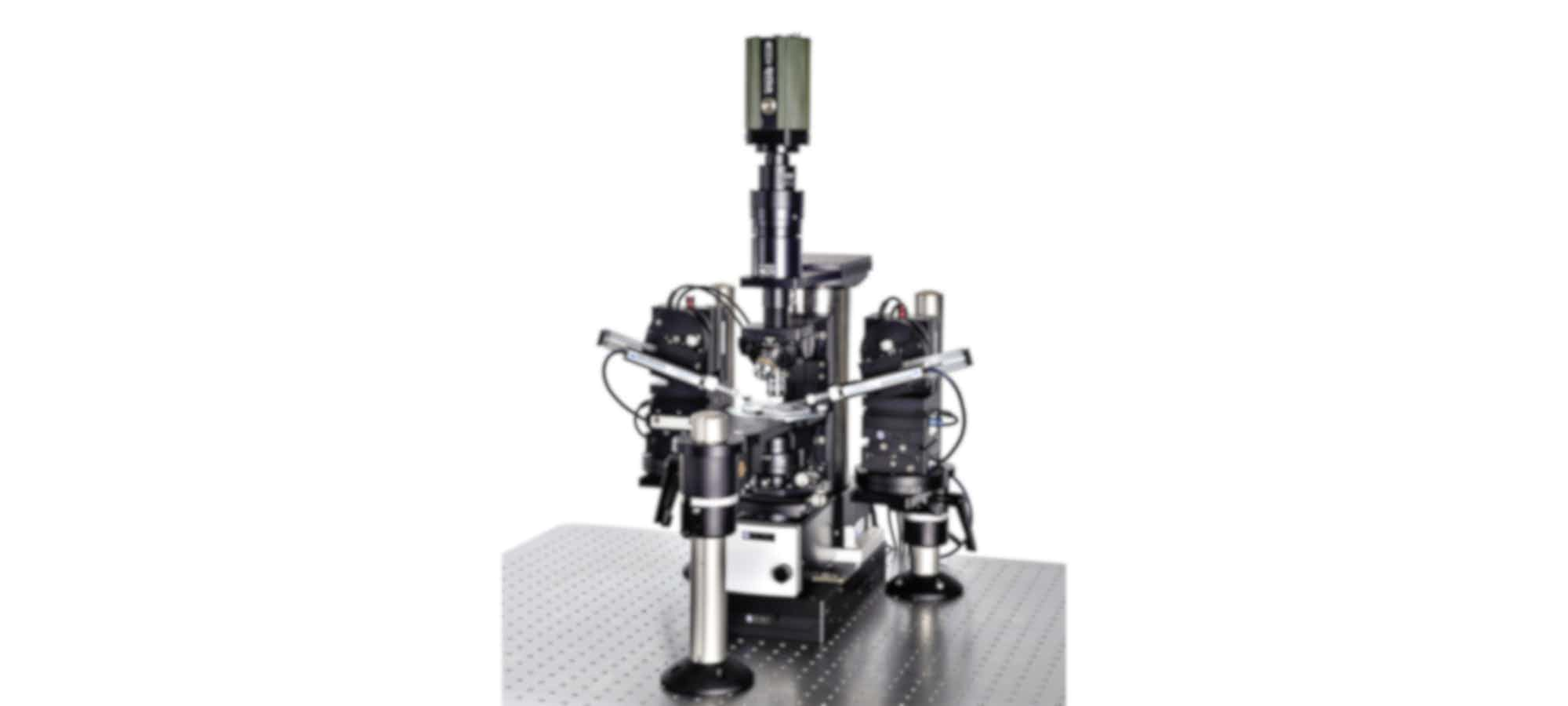
Eight environmental factors to consider when setting up your electrophysiology rig
Electrophysiology rigs are essential tools for studying the electrical activity of cells. Ensuring accurate and reproducible results on your electrophysiology rig, including patch clamp set-ups, requires meticulous consideration of various environmental factors. These factors range from physical conditions to ambient interferences, each playing a crucial role in the integrity of experimental outcomes.
Here are the key environmental considerations for optimising the performance of your electrophysiology rig:

Temperature
Temperature fluctuations, even minor ones, can drastically influence cellular physiology, altering membrane properties and ion channel kinetics:
- To negate this, ensure a stable temperature is maintained in the sample chamber using an in line perfusion heater.
Humidity
Variations in humidity can have significant impact on electrode recordings, affecting electrode stability and impedance. Excessive moisture can lead to electrode corrosion, whilst excessive dryness can lead to an increase in electrical noise. To prevent this:
- Employ humidity-controlled environments.
Electromagnetic Interference (EMI)
Electromagnetic Interference (EMI) from electrical equipment, fluorescent lighting, and nearby electronic devices can contaminate electrophysiological recordings with unwanted noise. To avoid this unwanted noise:
- Shield the rig with a Faraday cage.
- Use low-noise amplifiers to minimise disturbances and ensure cleaner signal acquisition and external noise suppression.

Mechanical vibrations
Vibrations from heating, ventilation and air-conditioning systems, foot traffic, or nearby equipment can introduce motion artifacts into recordings, obscuring subtle electrical signals.
- To prevent this isolate the rig on vibration-isolation platforms
- Make sure your table is floating level by adjusting the little arms on the legs. Check the pistons are not pulled to a slant.
- Ensure the table top is not touching the cage, even a cable getting clamped/stuck can create a mechanical short.
- Get familiar with patching using your camera, that way you can avoid touching the rig and reduce accidental knocks. Scientifica's Follow function can be used to have your pipettes follow your objective to make this even easier.
- Ensure that any equipment that can add mechanical noise or vibration is positioned away from the floating table (for example control cubes and perfusion systems).
Air quality
Air quality is critical, particularly in cell culture experiments. Contaminants such as dust, aerosols, or volatile organic compounds can compromise cell viability and introduce confounding variables.
- Implement HEPA filtration systems if possible
- Regular cleaning of the rig will reduce intrusive contaminants
Light exposure
Light exposure is particularly important when working with photosensitive samples or optogenetic techniques. Uncontrolled light exposure can induce cellular responses or photo bleach fluorescent markers, puzzling experimental interpretations. To mitigate this:
- Use light-tight enclosures and eliminate light spill from other sources within the lab environment.
- Work and patch using your camera not eyepieces so you can lock the rig away and use Follow function to help set up pipettes to follow your objective from the start.
- Use LED illumination systems with precise intensity and wavelength control to provide greater experimental control.
Electrode selection and preparation
The choice of electrodes and their preparation significantly impact recording quality, so consideration needs to be given to the material, tip diameter and impedance.
Care needs to be given to choosing the appropriate electrodes (e.g., glass micropipettes, metal electrodes) and proper preparation for optimal cell access and signal clarity.
Ergonomic considerations
Researchers spend extensive periods operating rigs, so providing a comfortable and ergonomically designed workstation is essential. Incorporating adjustable seating and well-placed instruments ensure researcher well-being and experimental consistency.
In conclusion
The environmental factors surrounding electrophysiology rigs profoundly influence experimental outcomes. Factors such as temperature and humidity, EMI, vibrations, air and light quality, shape the reliability and reproducibility of electrophysiological data. By attentively addressing these factors, researchers can enhance the robustness of their findings.







)